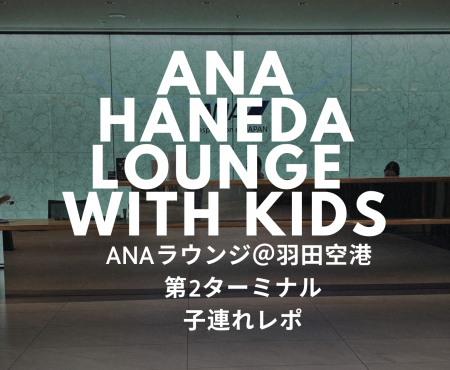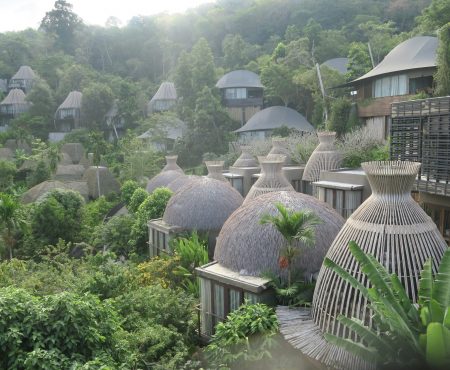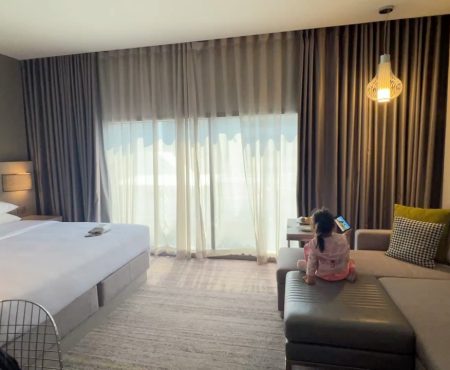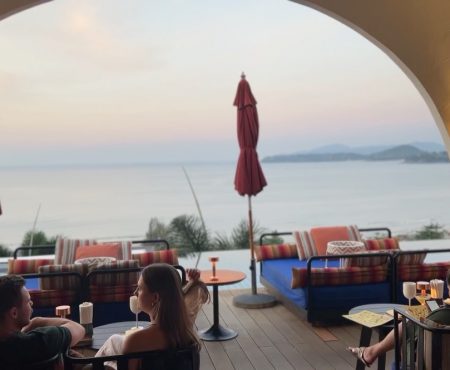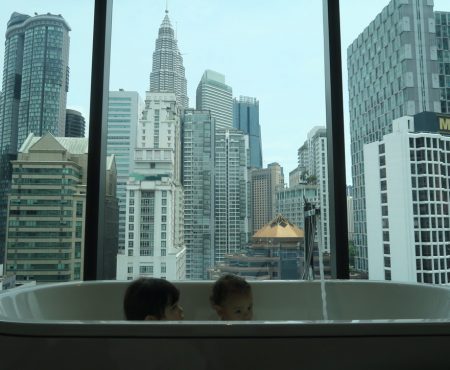English below↓
ゾウさんに会ってみたい、とタイに行く前から言っていた3歳の長女。
シアトルでも日本でもドバイでも動物園に行ったことがありますが、なぜかタイミング悪く、本物のゾウを見たことがありませんでした。
そこで、タイでゾウに乗ると言うのができないか一度考えました。若い頃、私もラオスでゾウに乗ったことがあります。
調べていると、プーケットのビーチでゾウに乗って写真を撮れる、というのを見て、これ良い思い出になるなと思いました。(後から考えれば、この時の私には、無意識に「映えるな」という気持ちも入っていたと思います。)

ただ、驚くべきことに調べ始めるとGoogle Mapの評価は良くない。3です。(食べログのように良ければ3.6とかの基準ではありません。google mapでは、評価が良ければ4.9や5.0などもあります)。そんな中で、評価1の人がたくさんいるし、レビューによく出てくるキーワードが動物虐待、拷問、チェーン、ととにかくひどい。
「この業者は象をナイフで脅している」「写真に撮る瞬間まで、狭い檻に入れている」「ぞうは乗り物ではない」とたくさんの人が書いていました。
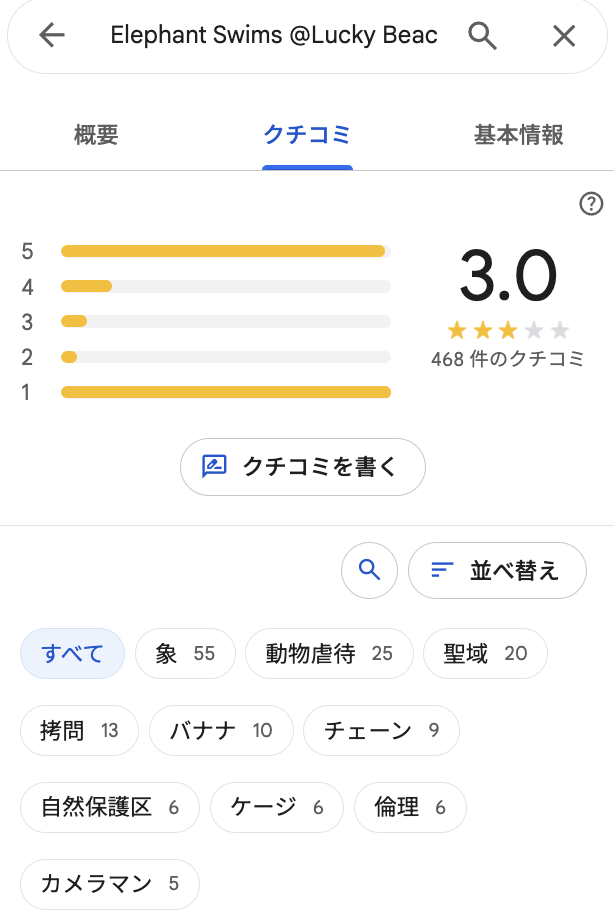
同時に、日本人はほとんど全員5をつけているのも衝撃でした。最新のコメントにも、「ゾウはこの仕事をしてどんな気持ちかわからないけれど、絶対行った方がいい」などが書かれています。・・・それってどういうこと?
そしてさらに調べると、ゾウは乗り物ではない、と考えはここだけではなく最近の新たな常識になってきていて、ゾウの保護地域と言うのがタイの全地域、各都市のにあることがわかりました。
象が保護されて生活している場所に、人が近づいていく形です。彼らの生活に合わせて食べ物をあげたり、一緒に散歩したり。私はラオスでゾウに5分くらい乗った無知な自分を反省し、こちらに行こうと思い直しました。
ただそれが、高くて長くて遠いんです。だいたい保護地域は広いので結構な田舎で、各都市から1時間以上車で行った所。そしてツアーは1日中なのです。ホテルのシャトルバスの送迎付きで、大人一人100ドルくらいが平均的。なので、基本は観光客を対象としたサービスと言えるでしょう。
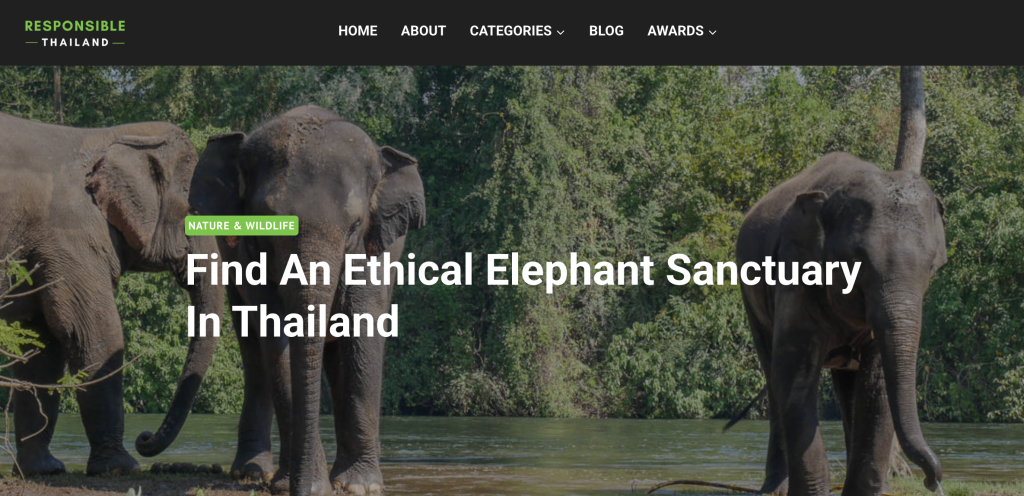
うちは子供が3歳1歳と幼く、ロングドライブにも慣れないし、暑い中屋外で長時間も難しい。保護地域に行きたいけれどどうしようかな、と悩んでいました。
1時間かけて行って1時間で帰る、しかも帰りは自己手配、そして家族で3万円ほどかかるのか。。。保護地域で触れ合わせてあげたいけども、ケチな私は悩みます。
タイに飛ぶ前から、どこかの都市でいいプランがないかとずっと調べていたら、チェンマイにいる間にできたばかりの保護地域が現地で知り、電話をかけてみました。まだウェブサイトもなかったのですが、ゾウは2頭、滞在は1時間以内で、タクシーで30分。としり、チェンマイを出る日の当日朝電話で予約しました。
ついてみると実際子供達は、ゾウを目の前にするとその大きさと迫力に少し緊張しており、やはり短時間でよかったと思いました。
当日現場で
まず、水で汚れるかもしれないと思ったので皆水着で行く。私もラッシュガードを着ています。
ただ、赤い洋服を渡され、皆これを着ることに。他のグループも2つほどありましたが、皆来させられていました。
そして少し待つと、ぞうさん搭乗!おばさんと甥っ子の関係性だそうです。
りんごや砂糖きび長い鼻の先に渡して、口へ運ぶのを至近距離見るのは、大人の私たちにも大迫力です。
近づいてみると肌の硬さや、毛が生えていることもわかり、さらに餌をあげた後に少しだけハグもさせていただき。
滞在時間は正味1時間、そのうち本当に触れ合った時間は30分くらい。だと思いますが、我らのニーズにピッタリ!と言うことで、あえてとても嬉しかったです。
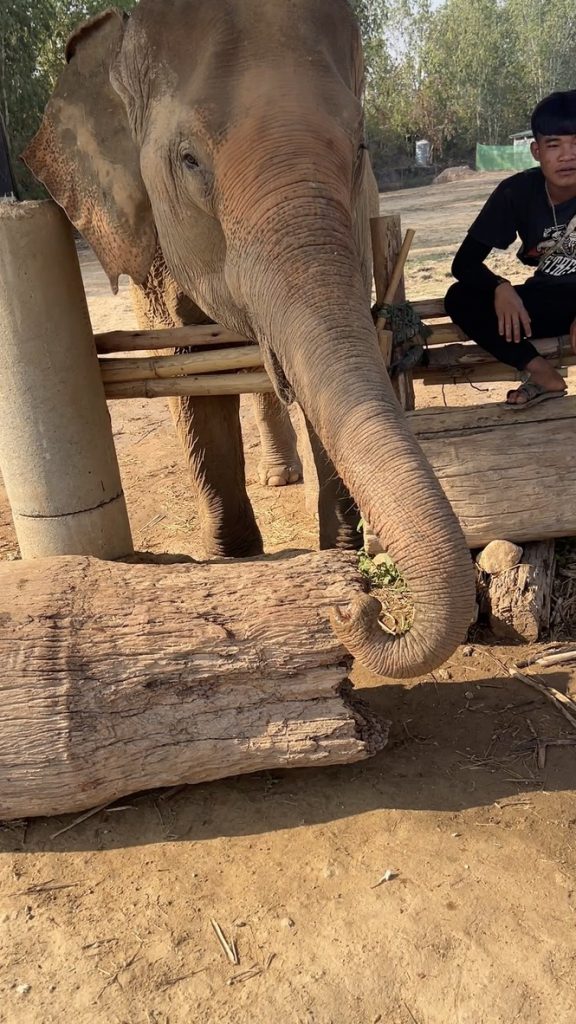
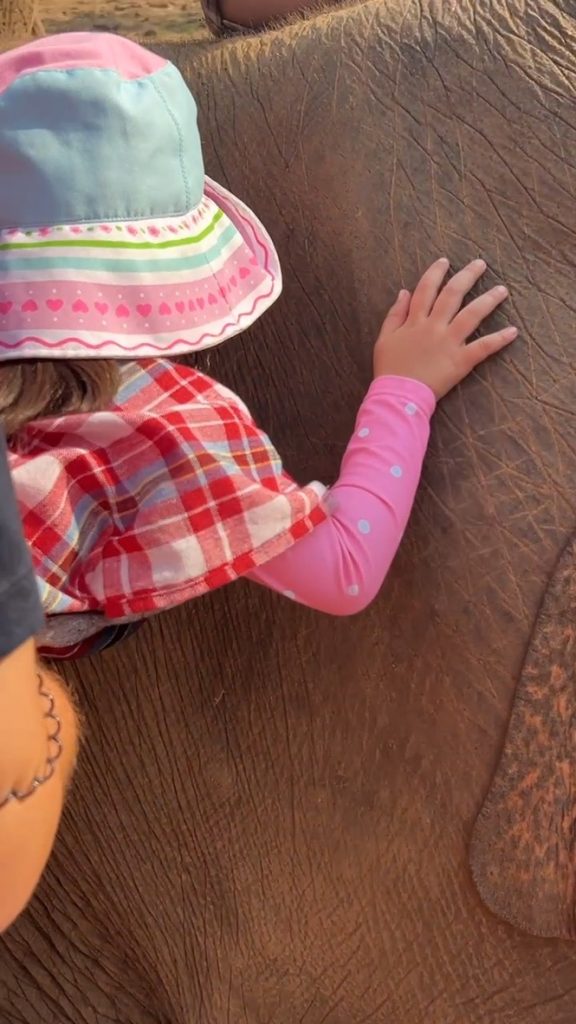
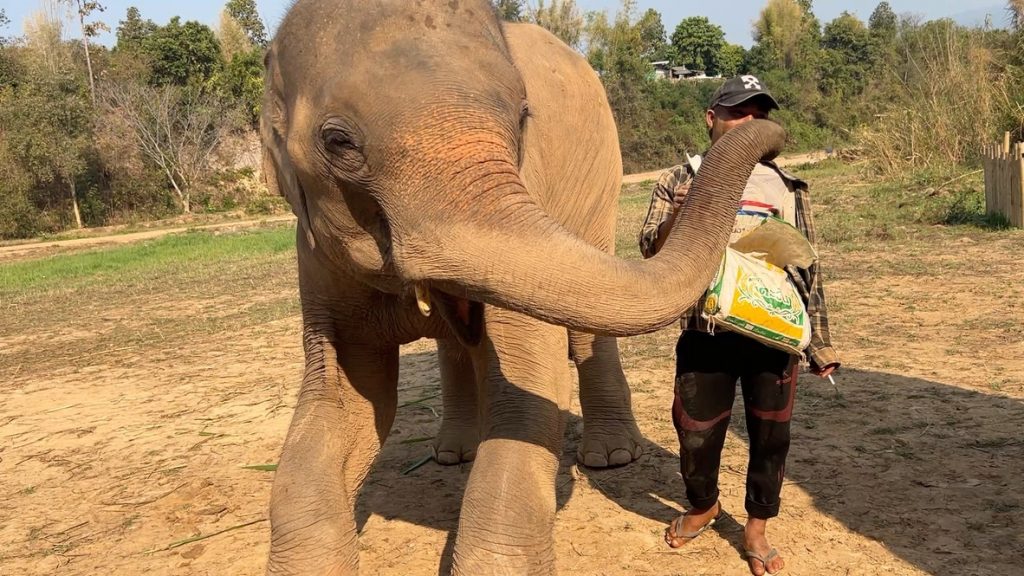
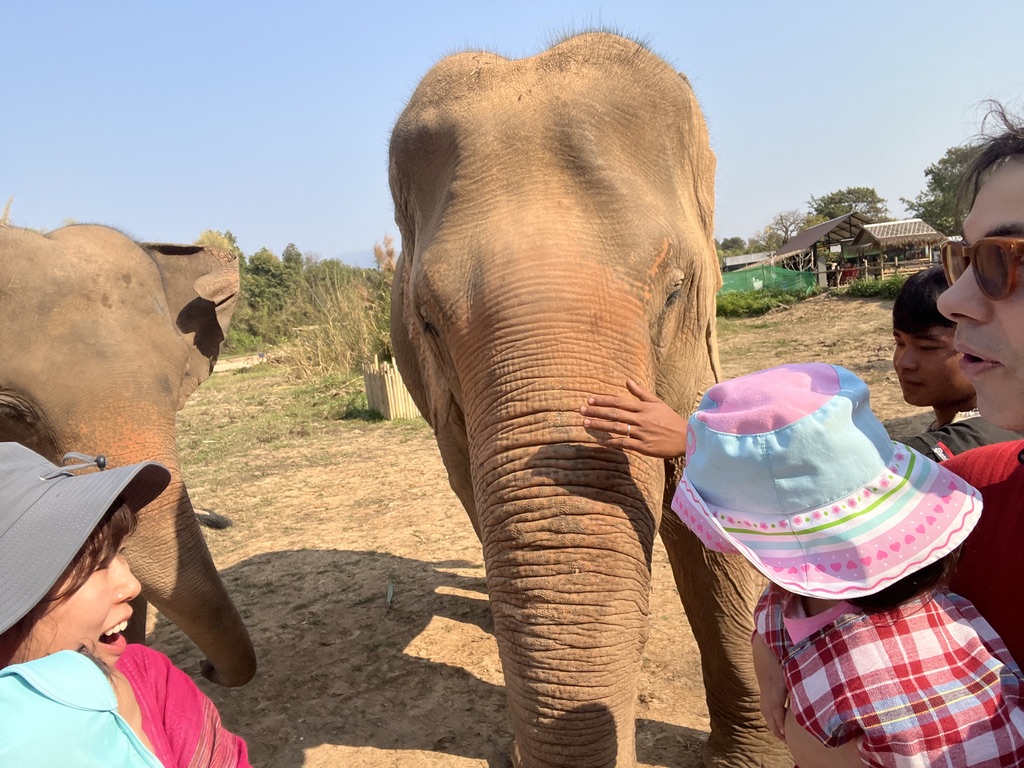
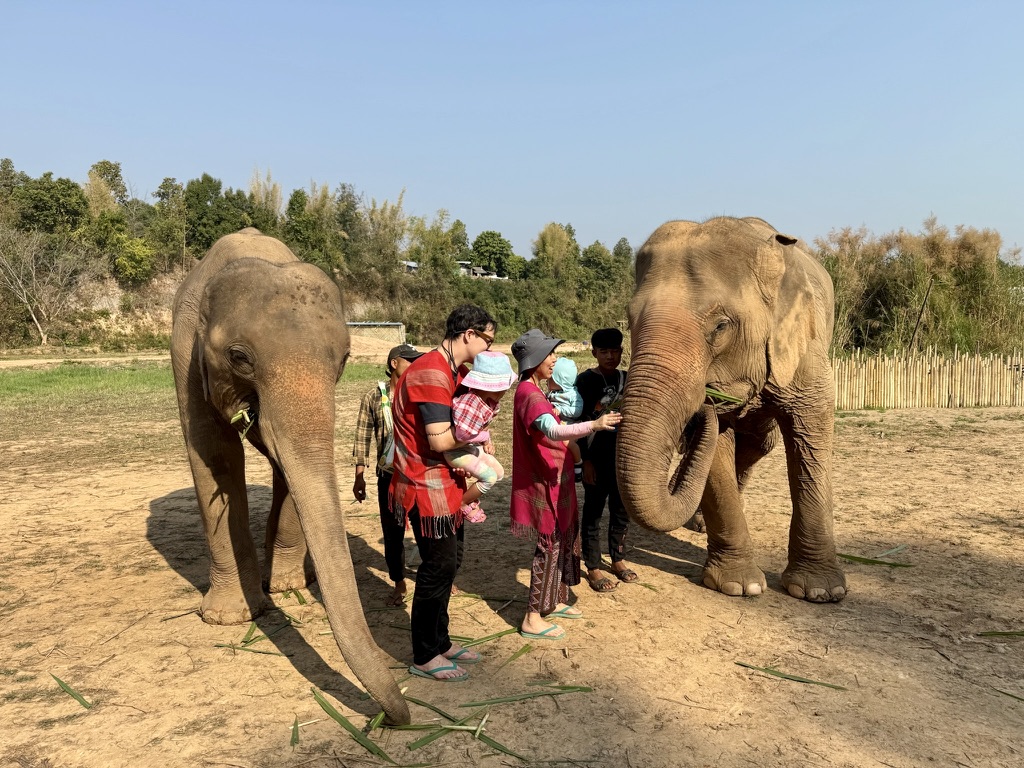
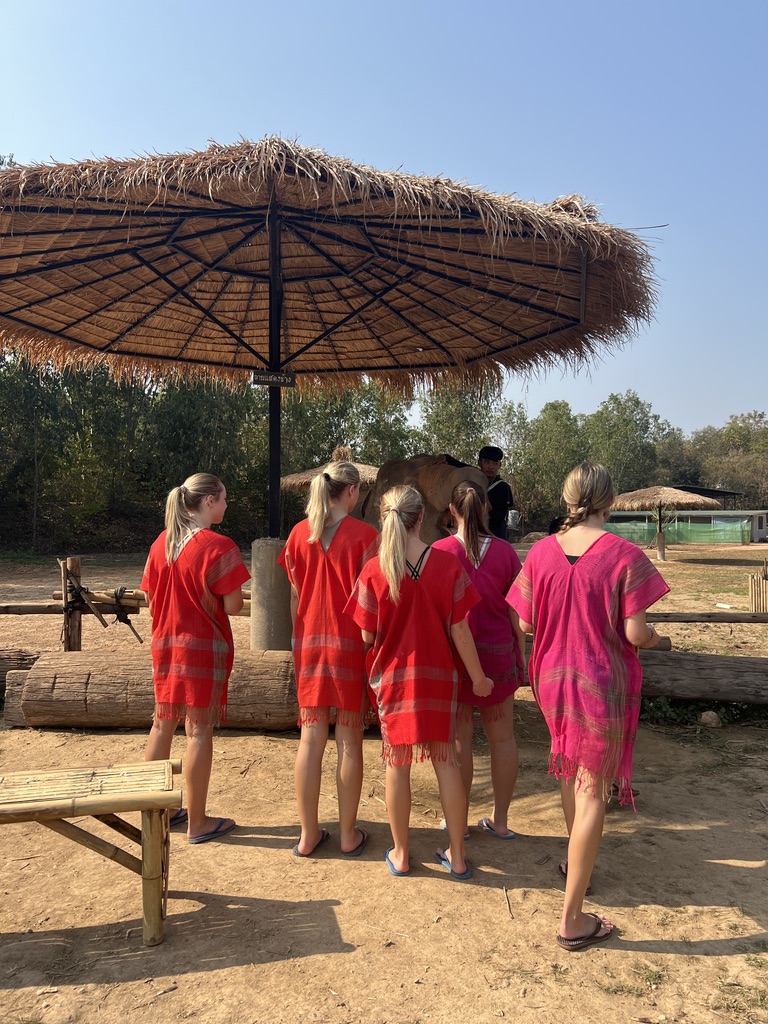
肝心のゾウの待遇(扱い)は、正直こんな短時間なので全てを見たとは思えません。傷つけるような姿もおなく、悪い感じはしませんでした。2等に対して広い場所があるのもすごく良いなと思いました。
長時間コースでは、一緒に水遊びなどができるようで、ヨーロッパの若者が多くきていました。
Elephant Fun Farm:
https://maps.app.goo.gl/xNGh7bjAMVWcHE5G6
子供にも記憶は強く残る
実はその日にバンコクに移動という忙しい日だったのですが、3歳の子供はその週ずっと何度も「ゾウさんにあったんだよね」と言っていました。保育園の先生とZOOMする機会もあり、その時も一番最初に伝えていました。
そして、なんとこの時点ではあまり喋れなかった1歳の次女までも、2週間後のタイの別の都市のホテルでも「◯◯ちゃん、ぞうさん、あった」と人生で初めて過去の話を話した時は、それだけインパクトが大きかったんだなと驚きました。
絵本でもゾウは頻出するのでその度に思い出しているようで嬉しくなります。
また帰国してから、子供たちはゾウさんにあったんだと言うと保育園の先生たちに「ゾウさんに乗ったの?」と言われることもあります。幼い子供達は、「ぞうさんは乗るのは動物愛護に反する」なんてことはもちろん言えませんが、私は上記のような話を捕捉もできます。先生もタイに行ったことがある方は多く、私のようにコロナ前に乗ったと言う経験をされてる方もいるので、興味深く聞いてくださいます。
タイは特に欧米の旅行者が昔から多く観光立国。
これは私の体感ですが、動物愛護の感度はアジアより欧米の方が高いので、このような動物園、じゃなくて保護地域がたくさんできているのでしょう。
ーー
これは、自分で調べて行ったからで、丸ごと日本の代理店に任せてチェックしなかった場合、あまり判らないで撮影したかもしれない、とも思います。
日本語だと可愛い若いインフルエンサーが冒頭のビーチでの像との撮影を絶賛している写真などばかりでしたので。。
でも子供達には、写真のために動物を使う、みたいなことは
タイで探す時は、タイ語または英語で翻訳して検索するのも、おすすめです。Googleページ翻訳で簡単にできます。
ーー
話が長くなりましたが、
子供がゾウに会う、という場所を親として探す中で、
私自身も新たな学びがあったというお話でした。
もうだいぶ前に感じるけれど、春にタイとマレーシアに1ヶ月行ってきました。その時のお話を書いていきます。
このように、親子で楽しむ旅を通して見えてくる学びや発見を、もっと共有しませんか?
タイの文化や食を感じながら語り合える【子連れOKのランチイベント】を5月11日に開催します🍽✨
NPO LunchTripでは5月11日にタイ料理レストランで子連れOKのランチイベントを行います。
👉 詳細はこちらをどうぞ
https://peatix.com/event/4374536
My daughter has been saying for a while that she wants to meet an elephant.
We’ve been to zoos in Seattle, Japan, and even Dubai, but for some reason, we’ve never had the timing to actually see a real elephant.
So, while in Thailand, I started to consider whether we could go for an elephant ride. When I was younger, I once rode an elephant in Laos. I started looking into it and came across a tour in Phuket where you could ride elephants on the beach and take Instagram-worthy photos. It looked like a great memory-making experience, so I began looking into booking it.
But then, I saw that the Google reviews were horrible—tons of 1-star ratings.
Comments in English said things like,
“They use knives to threaten the elephants,”
“The elephants are kept in small cages until photo time,”
“Elephants are not meant to be ridden.”
At the same time, I was shocked to see that almost all Japanese tourists had rated it 5 stars.
That contrast really hit me.
As I dug deeper, I discovered that not just this company, but many others, had begun shifting away from offering elephant rides.
In fact, across Thailand, new norms have emerged: elephants are no longer seen as something to ride, but as animals to be respected and protected.
That’s when I learned about elephant sanctuaries—places where elephants live freely and humans can visit on the elephants’ terms.
You can feed them, walk alongside them, observe them respectfully. But, these experiences are typically far from town (often over an hour’s drive) and cost about $100 per adult. Many include full-day tours and hotel shuttles. It’s clear these are targeted at international tourists.
In our case, with kids aged 3 and 1, long drives and full days in the tropical heat felt daunting.
I wanted to visit a sanctuary, but logistically, it felt too difficult.
Would I really pay nearly 30,000 yen for a half-day trip with toddlers, only to have to arrange my own ride home?
Still, I kept researching before our trip.
While in Chiang Mai, I came across a newly opened elephant sanctuary and called them directly.
They didn’t even have a website yet. But I found out they had just two elephants, visits were under an hour, and it was only a 30-minute taxi ride.
Perfect. I made a reservation the morning of our last day in Chiang Mai.
When we arrived, the kids were stunned by the sheer size and presence of the elephants.
I realized a short visit was exactly right.
We handed apples and sugarcane to the elephants using their long trunks and watched them munch it up close.
Even as an adult, the experience was incredibly powerful.
We got to see and feel the texture of their skin, their bristly hair, and after feeding time, we even got to give them a quick hug.
Our total stay was just about an hour, with roughly 30 minutes of direct interaction.
It was absolutely perfect for our family.
There were longer experiences available—like bathing with the elephants—which seemed to attract a large number of European tourists, especially young travelers.
2 WEEKS LATER, THIS HAPENED
But what surprised me most came after the trip:
My 1-year-old, who barely spoke at the time, talked about it 2 weeks later.
“Met the elephant,” she said—her very first time talking about a memory from the past. That moment made me realize how deeply this had impacted her.
Now every time they see an elephant in a picture book, they say “We met an elephant!”—and I feel so glad we chose the path we did.
Even back in Japan, when the kids mention meeting an elephant, their daycare teachers often ask, “Did you ride it?”
Of course, children can’t explain animal ethics, but I can share what we learned.
Some teachers who’ve been to Thailand themselves—even those who rode elephants pre-COVID—listen with interest and curiosity.
Thailand is a longtime tourist hub, especially for Westerners.
And from what I’ve seen, awareness of animal welfare is higher among European and American travelers compared to those from many Asian countries.
So, it makes sense that so many ethical sanctuaries are popping up now.
I realized that if I had relied completely on a Japanese travel agency, I may have never noticed these issues.
When searching in Japanese, all I saw were glowing reviews and cute influencers happily posing with elephants on beaches.
But I want my kids to grow up understanding that animals aren’t just props for our photos.
When researching, I highly recommend searching in English or Thai too—Google Translate makes it easy.
—
This ended up being a long story, but through the process of looking for a place where our kids could meet elephants, I learned a lot myself as a parent.
—
By the way, it feels like forever ago, but we spent a month in Thailand and Malaysia this past spring.
I’ll be sharing more stories from that trip soon.
And on May 11, our NPO LunchTrip will host a Thailand-themed lunch event at a Thai restaurant in Tokyo—kids welcome!
If you’re curious about ethical tourism or want to hear more about traveling Thailand with children, come join us!”

